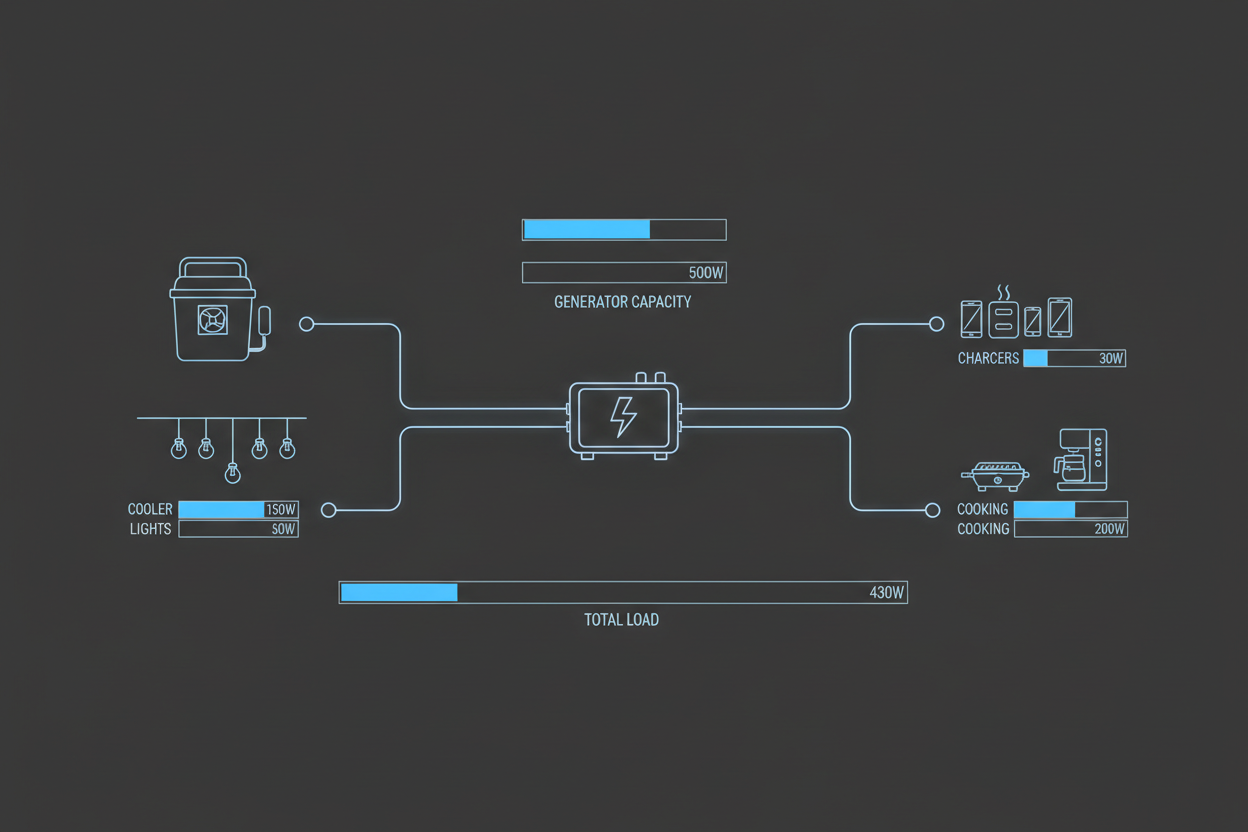What Can a Camping Generator Power?
Camping generators support a wide range of devices used for cooking, lighting, cooling, and charging. Understanding typical wattage requirements helps campers choose the right generator and avoid overload.
Planning campsite loads ensures smooth and quiet operation throughout the trip.

Typical Camping Appliance Wattage
Most camping appliances fall between fifty and twelve hundred watts. Devices with heating elements require higher running wattage and brief surge power at startup.
Light-duty electronics use minimal power and run efficiently on inverter generators in eco mode.
- LED lights: 5–20W
- USB chargers: 10–30W
- Electric coolers: 40–80W (100–200W surge)
- Projectors: 80–150W
- Kettles: 800–1200W
- Induction burners: 600–1200W
- CPAP machines: 30–80W
What a 1000W Generator Can Power
Small generators handle basic campsite needs. Minimalist campers enjoy quiet operation with low-weight setups.
These units work well for simple overnight trips and tent camping.
- LED lighting
- Phone and tablet charging
- Small fans
- Low-watt coolers
What a 2000–2400W Generator Can Power
Mid-size generators balance portability and capability. They support light cooking and cooling devices for weekend trips.
Many campers prefer this watt class for regular outings.
- Electric coolers and small fridges
- Low-watt kettles
- Induction burners
- Projectors and speakers
What a 3000–4500W Generator Can Power
Larger generators handle group camping or higher-demand cooking. They offer more surge wattage for appliances that require stronger startup power.
These units provide stable performance for multiple devices at once.
- Kettles and coffee makers
- Electric grills
- Water pumps and compressors
- Multiple coolers and lighting
Load Planning for Smooth Operation
Managing wattage prevents overload and ensures reliable runtime. Campers should track running watts and avoid using several high-draw appliances simultaneously.
Staggering cooking tools helps maintain stable generator performance.
- Run kettles separately from induction burners
- Let coolers stabilize before powering pumps
- Keep total running load under seventy percent of capacity
Eco Mode Benefits for Low Loads
Eco mode improves fuel efficiency during low-watt tasks. Charging, lighting, and cooling run efficiently at reduced RPM.
Noise levels drop noticeably during nighttime operation.
- Use eco mode for overnight loads
- Avoid eco mode for surge-heavy appliances
- Check power draw on the display panel
Conclusion
Camping generators can power lighting, cooling, cooking, and charging devices depending on wattage. Matching appliances to generator capacity ensures safe and efficient operation.
Campers enjoy reliable outdoor power by planning loads carefully and using eco mode effectively.
